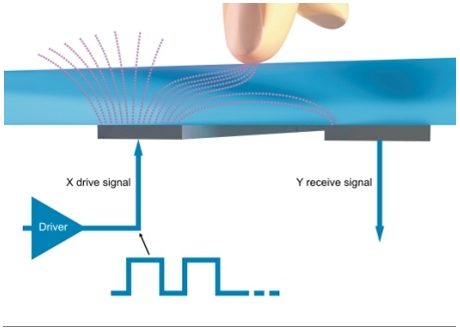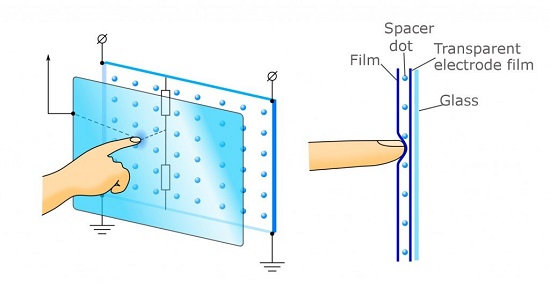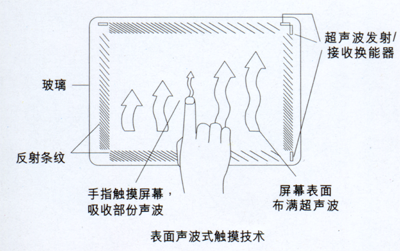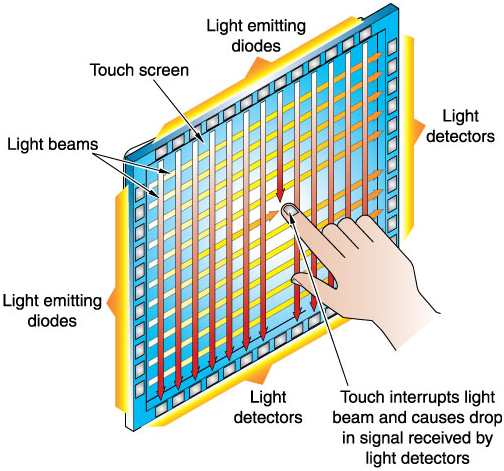In this digital age, touchscreens have become an indispensable part of our daily interactions. From smartphones to self-service kiosks, the application of touchscreens is ubiquitous. While their operation may seem simple and intuitive to the user, the technology behind touchscreens is quite complex. This article will detail the various types of touchscreens and their respective working principles.
Capacitive Touchscreens

1、Structure: Capacitive touchscreens typically consist of a glass layer coated with a transparent conductive material, such as Indium Tin Oxide (ITO).
2、Working Principle: Capacitive touchscreens rely on the electrical conductivity of the human body. When a finger approaches the screen, it forms a capacitive circuit and slightly alters the electric field, which is sensed through electrodes in the corners of the screen.
3、Multi-touch: These screens can easily handle multi-touch inputs, allowing users to perform various complex gestures, like pinching and rotating.
4、Sensitivity: They are highly sensitive to light touches, registering input without the need for pressure, making them more intuitive and fluid to use.
5、Advantages: High transparency and multi-touch capability, suitable for high-definition displays.
6、Limitations: They do not work with gloves or with non-conductive objects like a plastic stylus.
Resistive Touchscreens

1、Structure: Consist of two layers of conductive transparent material, separated by an insulating layer, usually air or tiny plastic beads.
2、Working Principle: When a user applies pressure with a finger or stylus, the two conductive layers make contact, changing the resistance value. The controller reads this change to determine the touch location.
3、Single Touch: These screens mostly handle only a single touch point and do not support multi-touch.
4、Durability: Resistive touchscreens are relatively durable, capable of withstanding harsh environments and physical wear.
5、Advantages: Relatively low cost, and can be operated with any object, including gloved fingers or a stylus.
6、Limitations: Lower resolution, prone to wear over time, and do not support multi-touch.
Surface Acoustic Wave (SAW) Touchscreens

1、Structure: Uses two ultrasonic transmitters and two receivers, placed at opposite edges of the screen.
2、Working Principle: The transmitters generate ultrasonic waves that propagate across the screen surface. When a user touches the screen, some of the sound waves are absorbed or blocked. The receivers then detect these wave interruptions to determine the touch location.
3、Accuracy: SAW touchscreens are very precise in response to touches and can provide clear display quality.
4、Advantages: Do not require the touchscreen itself to be conductive, suitable for large screen displays.
5、Limitations: The surface is susceptible to dust and moisture, which can lead to false touches.
Infrared Touchscreens

1、Structure: A series of infrared LEDs and corresponding photodetectors are installed along the screen's edges.
2、Working Principle: The LEDs emit infrared light, forming an invisible grid. When an object like a finger touches the screen, it interrupts the infrared light beams. The detectors then record these interruptions to determine the touch location.
3、Multi-touch: Infrared touchscreens can support multi-touch, depending on the density of the light grid and the capability of the controller.
4、Advantages: Not limited by the display technology, can be used with various types of screens, suitable for large-sized screens.
5、Limitations: Physical obstructions can affect performance, and external light sources may interfere with the sensors.
The diversity and advancement of touchscreen technology represent a significant achievement in combining high-end technology with user-friendliness. From capacitive to resistive, to surface acoustic wave and infrared technologies, each type of touchscreen has its unique applications and limitations. These technologies are not only the cornerstone of modern interaction but also open the door to future innovations. Choosing the right touchscreen technology requires considering the application scenario, cost, and user needs. As technology continues to evolve, touchscreens will continue to push the boundaries of human-computer interaction, bringing more intuitive and efficient experiences to our daily lives.
The 8 inch displays might be affected and delay for an accident.
New iPhone 13 Series will use On-Cell OLED Displays. And it that will be launched in the second half of this year will be exclusively supplied by Samsung Display (SDC)
This is the project management of how sinocrystal handle your customized project relate to displays.
Discover the key factors to consider when choosing an LCD display for your project, including size, resolution, interface, brightness, and customization options from a factory-direct manufacturer.
Discover the latest innovations in rugged LCD displays for harsh environments — from extreme temperature resistance to sunlight readability and waterproof designs. Factory-direct manufacturing with full customization.
A complete guide to LCD display connection methods, including SPI, I2C, RGB, MIPI, LVDS interfaces and physical mounting options. Learn how to connect monochrome and TFT LCDs to your development board or product housing.
This week, we had the pleasure of hosting an esteemed international client at our LCD display manufacturing facility in Dongguan. Guided by our team, the client visited key production areas such as the fully automated COG bonding line, backlight assembly area, full lamination workshop, and final product aging test section. They highly appreciated our production capacity, strict quality control, and engineering expertise. This visit strengthened mutual trust and set the stage for future collabora